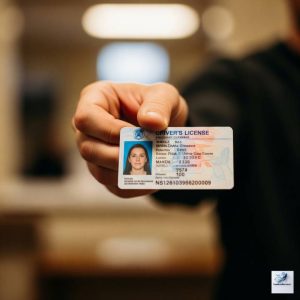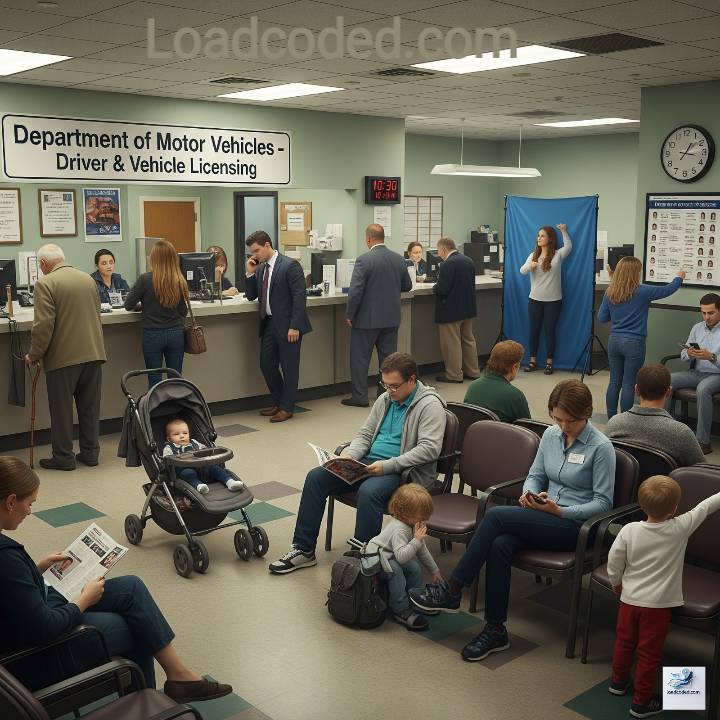How to Get Drivers Licence: 7 Simple Steps to Pass Easily in 2025
Learn how to get drivers licence fast with our complete 2025 guide. Step-by-step instructions, tips, and answers to common questions for new drivers.
How to Get Drivers Licence

How to Get Drivers Licence: Complete Step-by-Step Guide for 2025
Getting a driver’s licence is more than just a formality it’s a key to personal freedom, better job opportunities, and the ability to travel on your own terms. For many, it’s also a rite of passage into adulthood. However, the process isn’t the same everywhere, and missing a single step can delay your application.
This guide gives you the most complete, up-to-date, and practical instructions for getting your driver’s licence in 2025, whether you’re in the United States, the United Kingdom, Canada, Australia, or India. We will walk through everything from eligibility requirements to acing your road test, along with answers to the most common questions new drivers have.
Basics of a Driver’s Licence
What is a Driver’s Licence and Why Do You Need One?
A driver’s licence is a government-issued identification card that gives you the legal authority to operate a motor vehicle. It contains personal information (name, date of birth, address) and driving-related details (licence class, restrictions, expiry date).
You need a driver’s licence because:
- It’s the law — driving without one can result in fines, penalties, or arrest.
- It serves as ID — accepted for banking, travel, and job applications.
- It ensures road safety — only qualified drivers are allowed on public roads.
Different Types of Driver’s Licences
While terminology differs by country, the main types are:
- Learner’s Permit (Provisional Licence) — lets you drive under supervision while learning.
- Full Driver’s Licence — no restrictions, allowing independent driving.
- Commercial Driver’s Licence (CDL) — required for operating heavy vehicles like trucks and buses.
- Motorcycle Licence — for scooters, motorbikes, or mopeds.
- International Driving Permit (IDP) — allows you to drive in foreign countries for a limited period.
| Licence Type | Purpose | Restrictions |
|---|---|---|
| Learner’s Permit | Practice driving under supervision | No solo driving |
| Full Licence | Unrestricted driving | Age & renewal limits |
| Commercial Licence | Operating large vehicles | Requires extra tests |
| Motorcycle Licence | Two-wheeled vehicles | Engine size limits may apply |
| IDP | Driving abroad | Valid only with home licence |
Step 1: Check Eligibility Requirements
Before you rush to the licensing office, ensure you meet the eligibility criteria. These change depending on your country or state.
Age Requirements for Getting a Driver’s Licence
- USA: Learner’s permit at 15–16, full licence at 18 (changes by state).
- UK: Provisional licence at 15 years, 9 months; full licence after age 17.
- Canada: G1 learner’s licence at 16; full licence after passing G2 and G tests.
- Australia: Learner’s permit at 16; provisional licence (P plates) after 1–2 years.
- India: Learner’s licence at 16 (two-wheelers), 18 for cars.
Required Residency and Identification Documents
You will need to prove both your identity and your right to reside in the country. Common requirements include:
- Proof of identity (passport, birth certificate)
- Proof of residency (utility bill, rental agreement)
- Social security number or national ID
- Recent passport-sized photos
- Medical certificate (in some countries)
Note: Keep both original documents and photocopies many offices won’t make copies for you.
Step 2: Apply for a Learner’s Permit
The learner’s permit is your first official step toward independent driving.
How to Apply for a Learner’s Permit
- Visit your local licensing authority (DMV in the US, DVLA in the UK, RTO in India).
- Fill out an application form (online or paper).
- Submit required identification documents.
- Pay the application fee.
- Schedule and pass a vision and knowledge test.
Costs and Fees for a Learner’s Permit
Fees differ across regions:
- USA: $20–$50
- UK: £34 (online) or £43 (post office)
- Canada: $25–$60
- Australia: AUD $25–$50
- India: ₹150–₹500
Step 3: Pass the Written Knowledge Test
This is where you prove you understand traffic rules before you start driving.
What’s on the Written Test
- Road signs and meanings
- Traffic laws and penalties
- Safe driving distances
- Alcohol/drug impairment rules
- Vehicle maintenance basics (in some countries)
Tips for Passing the Test on the First Try
- Read the official driver’s handbook.
- Take practice tests online.
- Study road signs thoroughly.
- Memorize key stopping distances and speed limits.
Step 4: Take Driving Lessons and Practice
Learning to drive is a mix of theory and hands-on practice.
Professional Driving School vs. Learning with Family/Friends
Driving School
- Professional instructors
- Structured lesson plans
- Mock road tests included
Family/Friends
- Flexible schedule
- Familiar environment
- May lack formal teaching structure
Most countries require a minimum number of supervised driving hours, e.g., 50 hours in the US, including 10 at night.
Step 5: Schedule and Pass the Road Test
Once you have gained enough experience behind the wheel, it’s time to prove your skills in a practical road test. This is where examiners evaluate your ability to drive safely, follow traffic laws, and demonstrate proper control of the vehicle.
Road Test Requirements and Process
While the exact process changes by country, here’s what typically happens:
- Booking the Test – Schedule online or by phone. In busy cities, wait times can be 1–3 months.
- Vehicle Check – Before you start, the examiner inspects your car for safety (lights, brakes, indicators).
- Basic Maneuvers – You’ll be asked to perform parking, reversing, and turning exercises.
- On-Road Driving – Driving through residential, urban, and sometimes highway roads while following traffic rules.
- End-of-Test Review – The examiner gives feedback and tells you if you passed or failed.
| Country | Test Duration | Special Requirements |
|---|---|---|
| USA | 15–30 mins | Three-point turn, parallel parking |
| UK | 40 mins | Hazard perception test + on-road drive |
| Canada | 30–40 mins | Winter driving knowledge (some provinces) |
| Australia | 30–45 mins | Logbook with minimum hours required |
| India | 10–15 mins | Driving on test track with cones |
Common Mistakes to Avoid During the Road Test
- Forgetting to signal before turning or changing lanes
- Not checking blind spots before merging
- Driving too fast or too slow for the conditions
- Rolling through stop signs instead of fully stopping
- Failing to yield to pedestrians or other vehicles
Note: Practice your maneuvers until they become second nature. Confidence, not overconfidence, is key.
Step 6: Receive Your Driver’s Licence
After passing your road test, you’re just a few steps away from holding your official licence.
How Long It Takes to Get Your Licence in the Mail
- USA: Temporary paper licence issued immediately; plastic card in 2–4 weeks.
- UK: Licence sent by post within 1 week.
- Canada: Temporary paper version until card arrives in 1–2 weeks.
- Australia: Card arrives in 2–3 weeks.
- India: Smart card licence issued within 1–4 weeks.
What to Do If Your Licence is Delayed
- Contact your local licensing office with your application reference number.
- Check your mailing address was entered correctly.
- In some countries, you can track your application online.
Step 7: Renewal and Maintaining Your Driver’s Licence
Getting your licence is just the beginning, you need to keep it valid.
Licence Renewal Timeline
- USA: Every 4–8 years depending on the state.
- UK: Every 10 years until age 70, then every 3 years.
- Canada: Every 5 years (varies by province).
- Australia: 3–10 years depending on your choice and fee.
- India: Every 20 years or until age 50 (whichever comes first).
Penalties for Driving with an Expired Licence
Driving with an expired licence can lead to:
- Heavy fines
- Vehicle impoundment
- Court appearances in severe cases
Note: Many licensing agencies send renewal reminders to keep your contact info updated.
Country-by-Country Licensing Differences
| Step | USA | UK | Canada | Australia | India |
|---|---|---|---|---|---|
| Learner Age | 15–16 | 15y 9m | 16 | 16 | 16–18 |
| Written Test | Yes | Yes | Yes | Yes | Yes |
| Minimum Practice Hours | Varies | None | 20–50 | 100–120 | None |
| Road Test Duration | 15–30m | 40m | 30–40m | 30–45m | 10–15m |
| Licence Validity | 4–8 yrs | 10 yrs | 5 yrs | 3–10 yrs | 20 yrs |
Frequently Asked Questions (FAQs)
1. How long does it take to get a driver’s licence?
(i). Anywhere from a few weeks to several months, depending on how quickly you pass your tests and meet practice hour requirements.
2. Can I drive without a driver’s licence?
(ii). No. Driving without a valid licence is illegal and punishable in all countries.
3. What happens if I fail my driving test?
(iii). You will have to rebook and may need to wait days or weeks before retesting.
4. Do I need insurance before getting my licence?
(iv). In most countries, yes, once you begin driving unsupervised. Learners may be covered under an instructor’s or guardian’s policy.
5. Can I use an international driver’s licence?
(v). Yes, but only temporarily. You must apply for a local licence if you stay long-term.
6. Is the process different for automatic vs. manual cars?
(iv). Yes. Passing in an automatic may limit you to driving automatics only.
Final Thoughts
Getting your driver’s licence is a rewarding journey that requires preparation, patience, and dedication. From the learner’s permit to the final road test, each step is designed to ensure you’re ready to drive safely and responsibly.
If you follow the advice in this guide, get to study the rules, practice diligently, avoid common mistakes. Then you will be well on your way to getting your licence and enjoying the freedom of the open road.
We are writing all round in finance, cryptocurrency, AI finance, investment, do follow us for more related topics.





![Top 10 Best Logistics Companies to Work For in 2025 [Ranked & Reviewed] 18 sketch 1754242848456](https://loadcoded.com/wp-content/uploads/2025/08/sketch-1754242848456-150x150.jpg)









